Do you have a product or a service, but you don’t know how to market it effectively? Today I want to show you how you can use the strategic prioritizer 1st things 1st to create the marketing strategy. We are going to evaluate a series of marketing tactics according to our chosen criteria to see on which of the tactics we should focus. To be practical, I will show you an example with the strategic prioritizer itself as a service that I want to promote.
The workflow of the strategic prioritizer is pretty straightforward and consists of four steps:
- Defining criteria
- Listing out tasks (or other things)
- Evaluating tasks by each criterion
- Exploring priorities

Note, it would be best if you could invite a marketing specialist to guide you through this.
Ready? Let’s start!
⚙️ Project setup
Add a new project to the organizational account. From the project templates, choose “Marketing Strategies”.
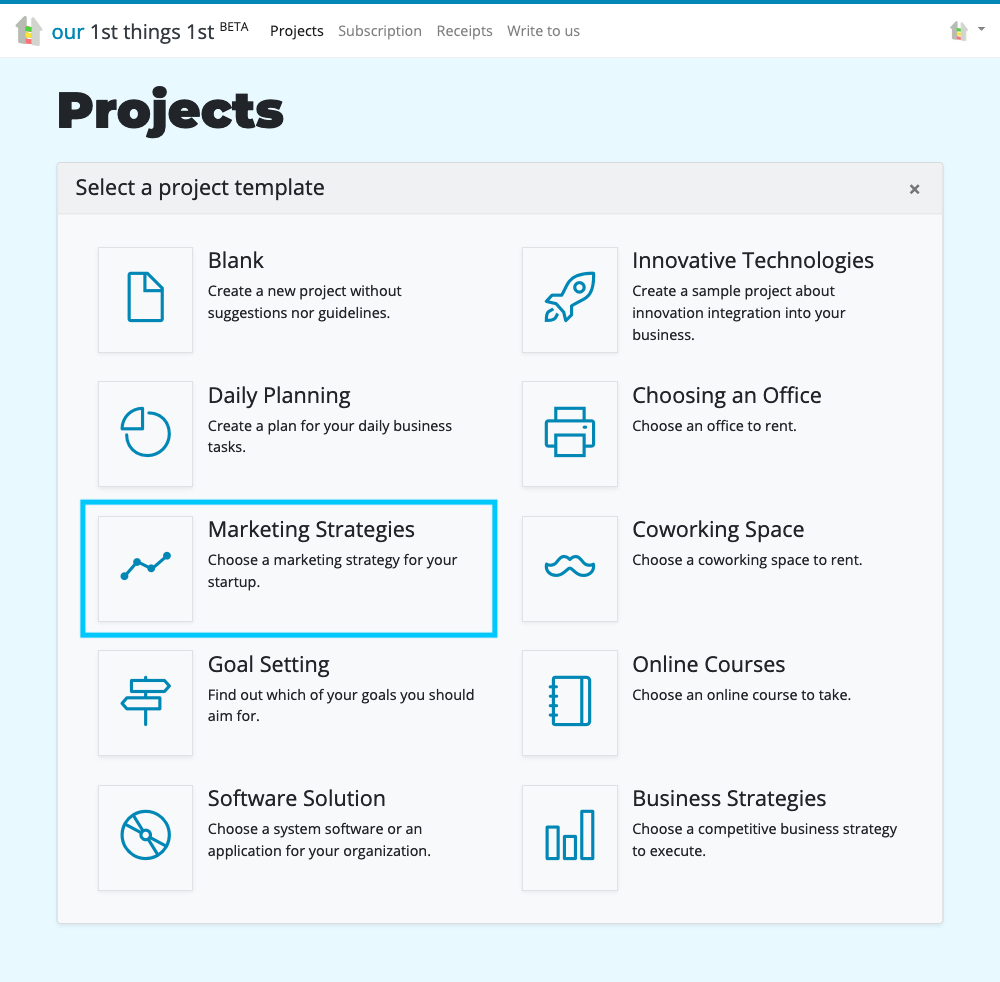
The project creation wizard will guide you through the essential questions:
1. Change or keep the project title and description. I will call my project “Marketing Initiatives for 1st things 1st”:
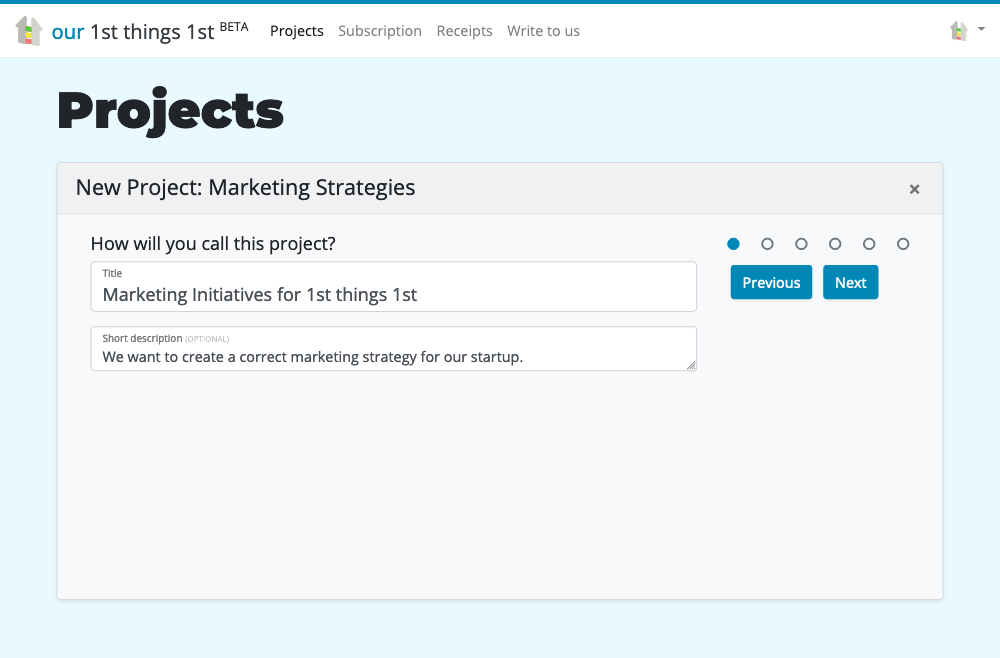
2. Decide how to name things. The preselected values suggest evaluating Tasks by Criteria. I will leave them this way. Do Initiatives or Tactics sound more reasonable to you than Tasks? Do Values or Aspects seem better than Criteria? You decide.
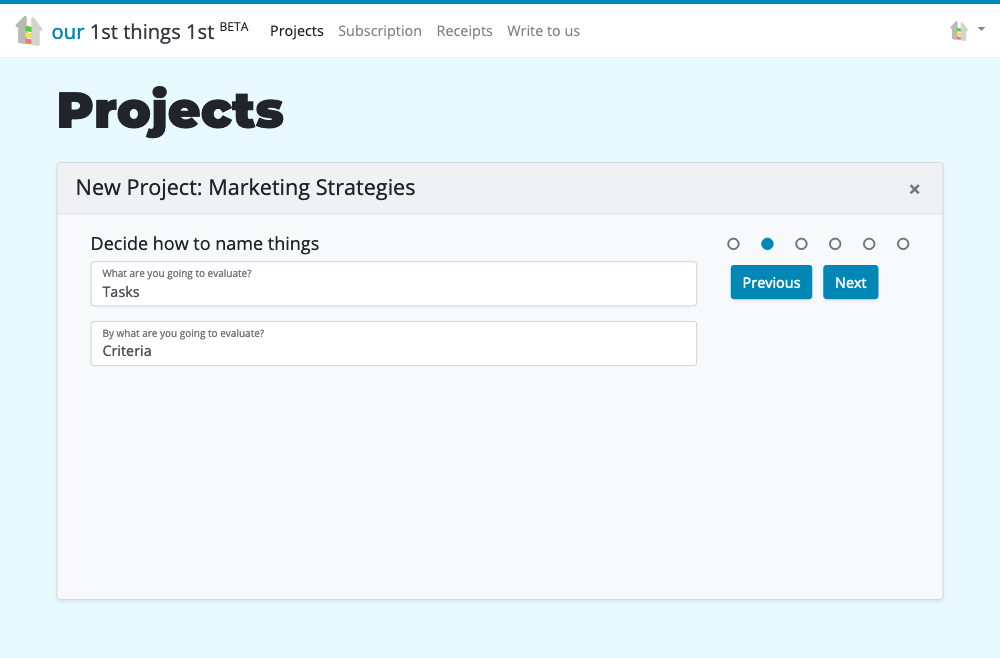
3. Define your mission and vision. This step is not mandatory, but it helps you get into the correct mindset.
The mission of 1st things 1st is “Assist people in defining and following their direction.”
And the vision is “1000 self-contented people and 100 successful teams in 3 years.”

4. Define the timeframe for your project. This step is also not mandatory, but when you have the start and end in mind, you can better choose the tactics for that timeframe.
As you can guess from the vision, the timeframe for 1st things 1st will be from the January 1, 2020 till December 31, 2022. After that, the strategies might need to get revisited.
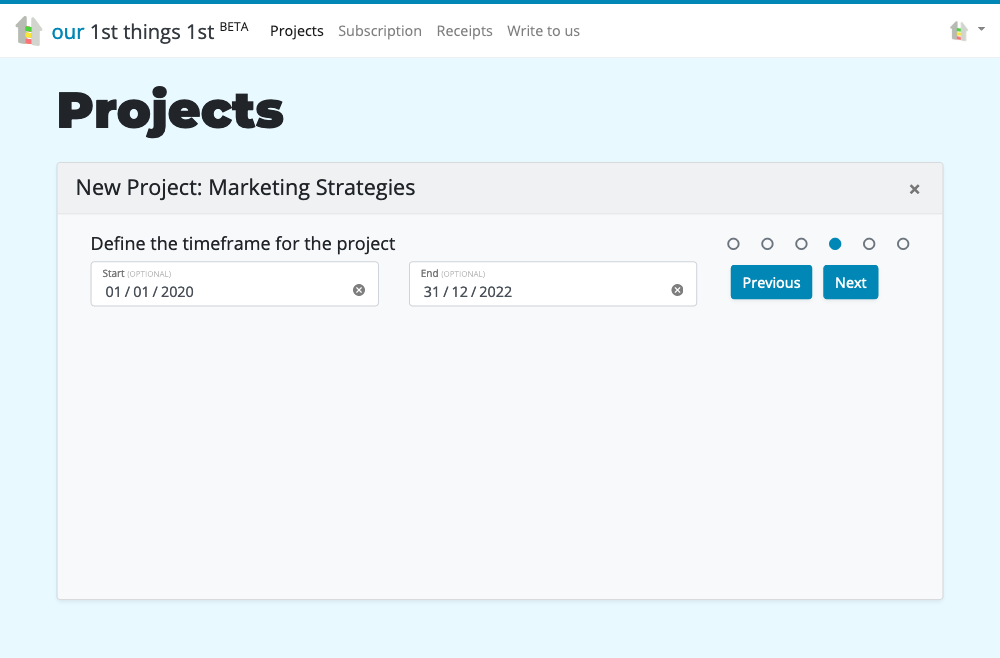
5. Choose up to 5 criteria. Check what resonates with you mostly.
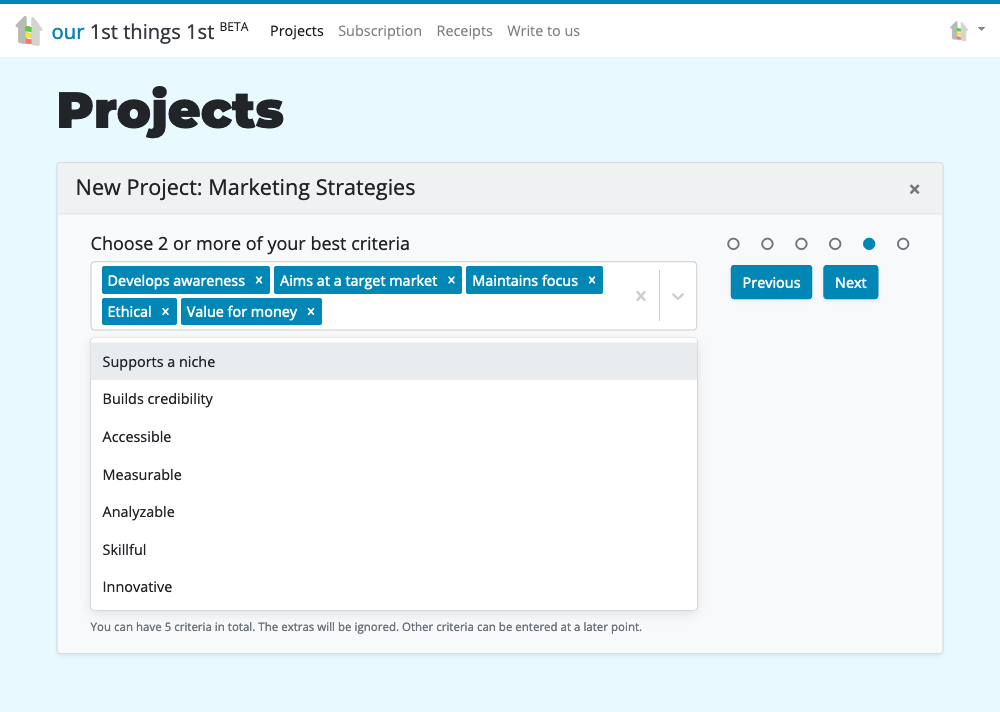
6. Choose some tasks that seem reasonable to you or that you would like to try. You’ll be able to enter some more tasks as free text later too.
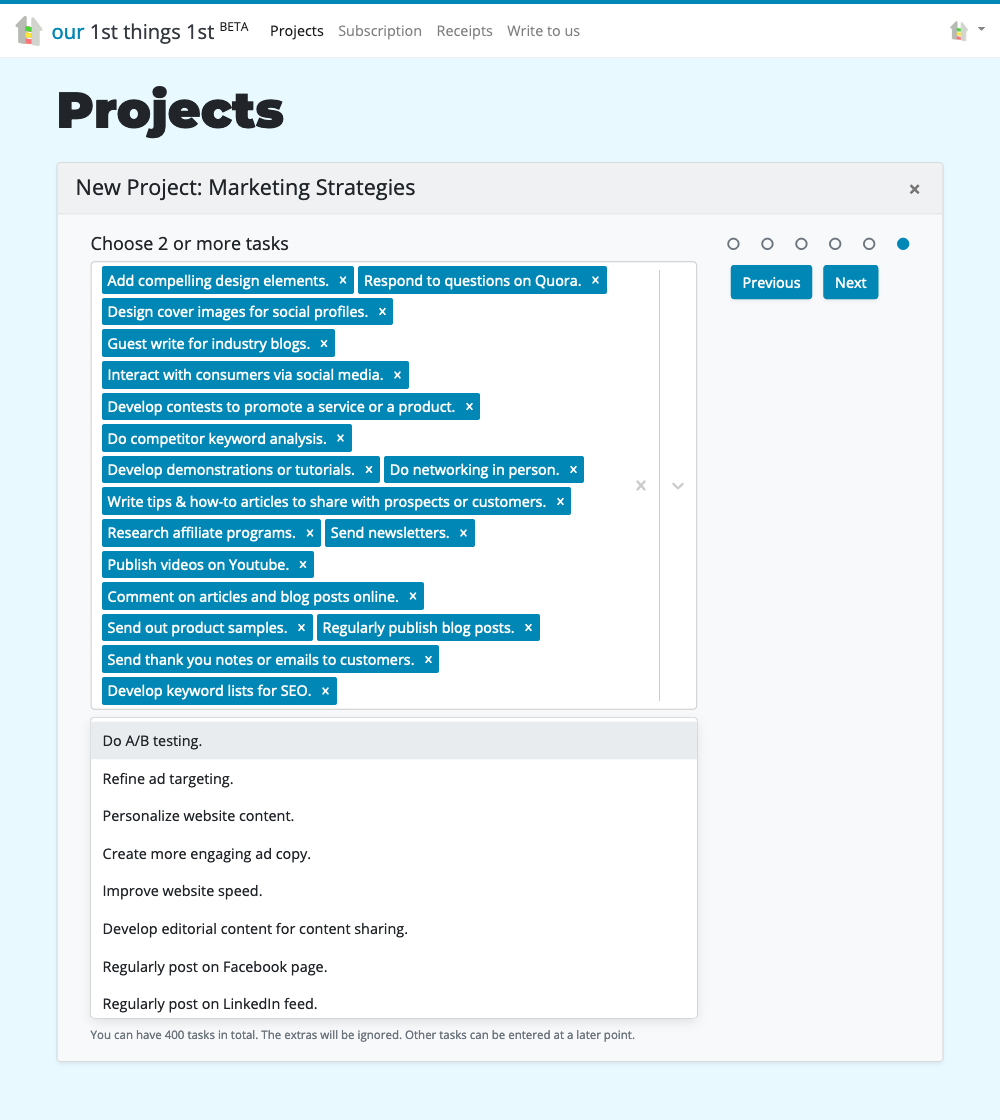
Now when you created the project, let’s explore the main steps of prioritization.
🧭 Step 1. Review and edit criteria
Now you can edit the list of criteria and change their importance or evaluation types. The default importance for all of them is 100%, and the evaluation type is the percentage from 0 to 100% (you will see them in step 3).
For example, this is how I set the criteria for the marketing tactics that I would like to use for 1st things 1st:
- Develops awareness because people need to learn how to use it.
- Aims at a target market because it’s not merely for everyone like food, air, water, and wifi.
- Maintains audience focus because people need to get reminded about best practices if they want to live progressively.
- Ethical because of GDPR and being fair with the customers.
- Value for money because marketing tactics need to bring profit to the business.
All of those criteria matter to me, so I set the 100% importance to all of them.
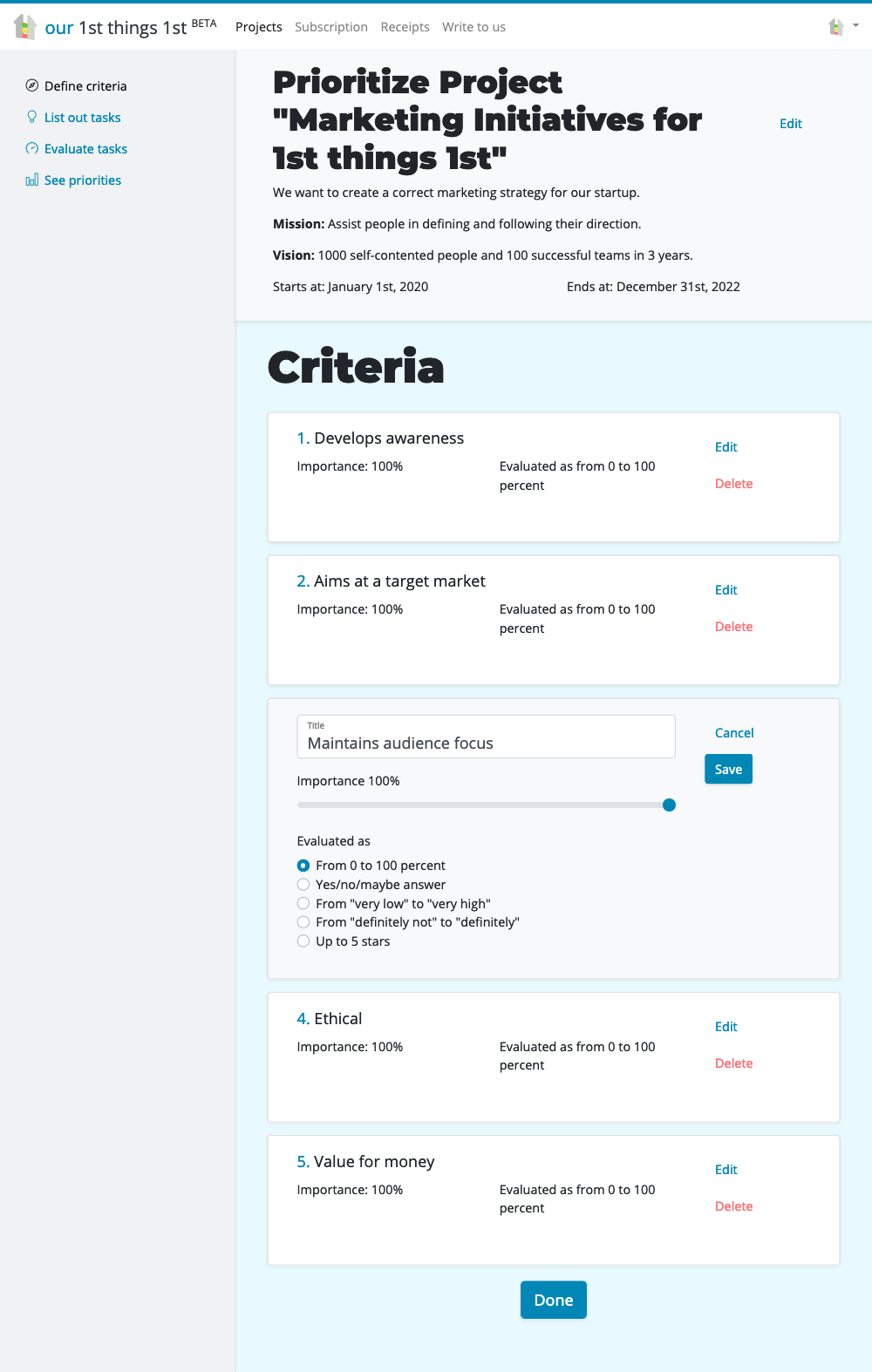
Your criteria and their importance will depend on your attitude and perspectives.
💡 Step 2. Review and edit tasks
In the next step, you will see the list of our chosen tasks where you can change their titles and descriptions.
For example, at the setup, I chose these things:
- Add compelling design elements, because that’s what attracts my attention when I see that on other websites.
- Respond to questions on Quora, because that’s a place where intellectual people gather.
- Design cover images for social profiles, because it’s a proper place to strengthen your brand.
- Guest write for industry blogs, because that’s a way to reach your target audiences.
- Interact with consumers via social media, because that’s how you create a dialogue with your users.
- Develop contests to promote a service or a product, because it would be interesting to try that.
- Do competitor keyword analysis, because that’s how you can attract more visitors to your site.
- Develop demonstrations or tutorials, because people need to get informed on how to use the tool.
- Do networking in person. because word of mouth is one of the most effective marketing techniques.
- Write tips & how-to articles to share with prospects or customers, because that’s one more way to spread the knowledge about the usage examples of the tool.
- Research affiliate programs, because that’s one of the ways to get more viral spread.
- Send newsletters, because this builds the audience and allows us to do A/B testing of your marketing campaigns.
- Publish videos on Youtube, because videos are the most attractive and viral media type at the moment.
- Comment on articles and blog posts online, because that gives voice to your brand.
- Send out product samples, because positive reviews and word-of-mouth recommendations can attract more customers.
- Regularly publish blog posts, because people need to know your intentions and progress.
- Send thank you notes or emails to customers, because they are who keep your business running.
- Develop keyword lists for SEO, because we want to get higher rankings in the search engines.
Also, I added a couple of new tasks:
- Regularly post on Facebook, Twitter, and LinkedIn, because that’s where my target audience spends time.
- Run ad campaigns on Facebook, Twitter, and LinkedIn, because that’s where I can find more people interested in this strategic prioritizer.

🎚 Step 3. Evaluate tasks by criteria
Now evaluate all tasks by all criteria. Go through the whole list and mark your choices. Be aware that the number of evaluations will be equal to criteria × tasks.
Let’s say, answering questions on Quora builds awareness at 100%, but doing competitor keyword analysis builds awareness probably at 60%. Doing networking in person is 100% ethical, but commenting on articles and blog posts online with the intention to advertise is maybe 75% ethical. Developing demonstrations and tutorials brings 100% of value for money, but running ad campaigns of Facebook, Twitter, and LinkedIn, brings only 40% value for money. Most of those evaluations are based on my previous experiences and gut feeling. But a marketing expert could have more precise evaluations.
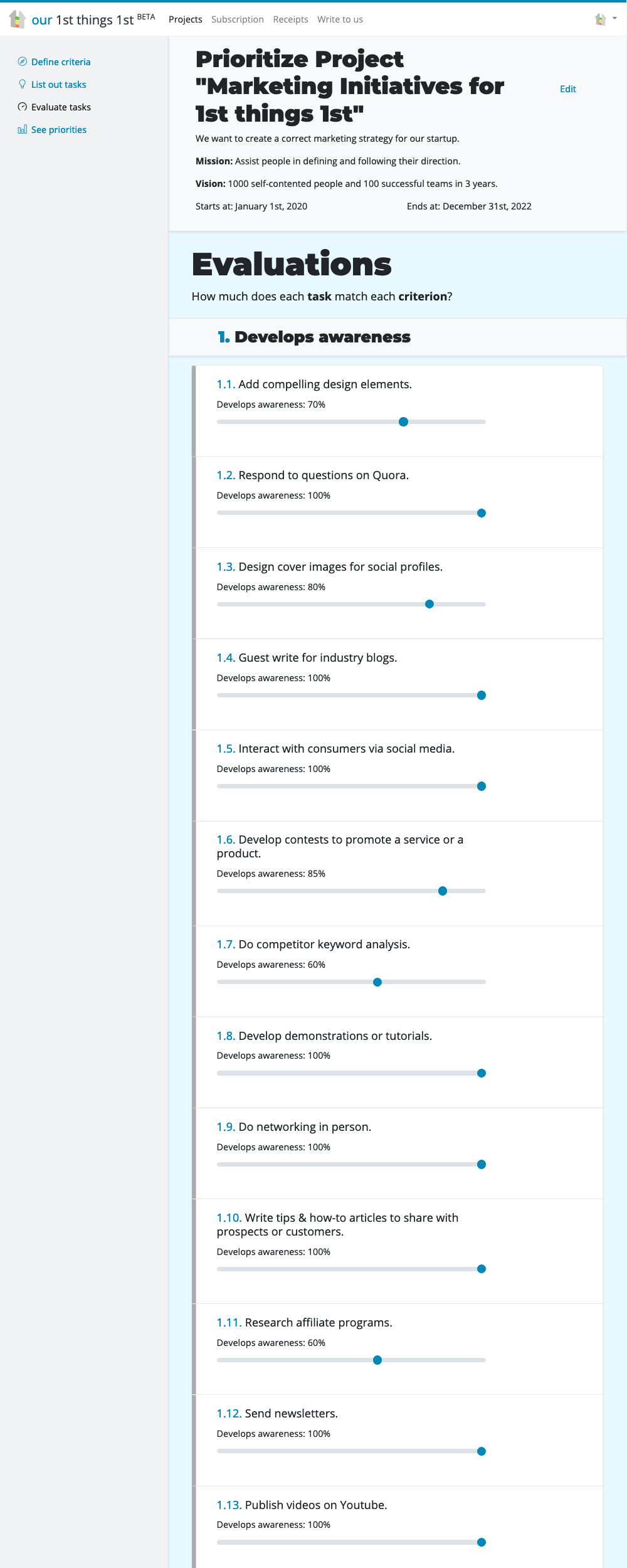
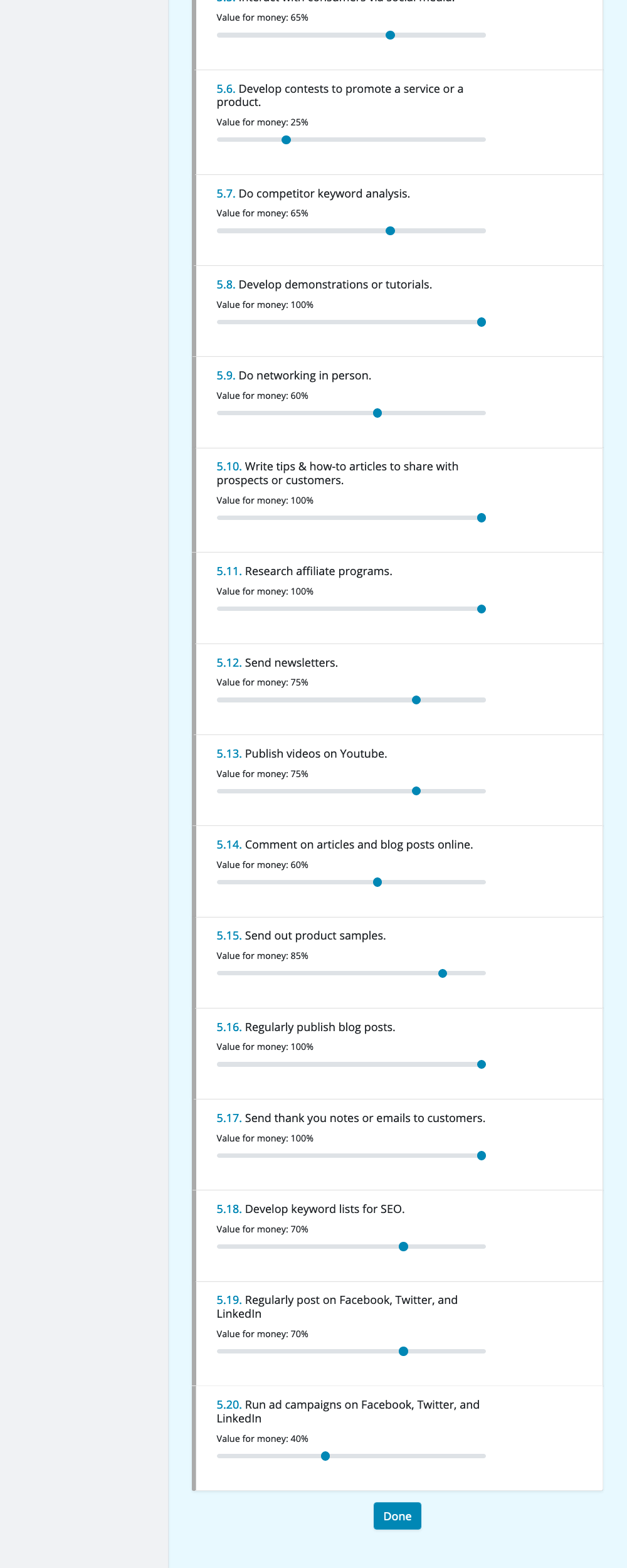
📊 Step 4. Analyze priorities
The prioritizer shows calculated and sorted tasks grouped into the ones:
- to choose for sure,
- to consider, and
- to skip.

As the result, my most essential tactics are guest-writing for industry blogs, developing demonstrations or tutorials, writing tips and how-to articles to share with prospects and customers, regularly publishing blog posts, interacting with consumers on social media, publishing videos on Youtube, and sending thank-you notes. So, content, content, and more content. That’s what you can expect from this blog in the upcoming future.
Introducing 1st things 1st, the ultimate solution for making complex decisions with ease.
With intuitive and smart prioritization tools, you can confidently prioritize options based on your personal preferences and assess them from multiple angles. Customizable templates allow you to align your priorities with your goals, while our AI-powered autosuggestion and fast evaluations equip you for confident and informed decisions.
Don’t struggle with analysis paralysis –
unlock the full potential of your decision-making with 1st things 1st.
Final words
After prioritizing your marketing tactics, it’s time to print the PDF version of the results, create user personas, the story you want to tell your customers, and start marketing your service or product.
Check out the organizational strategic prioritizer at our 1st things 1st.
Cover photo by Austin Chan.
